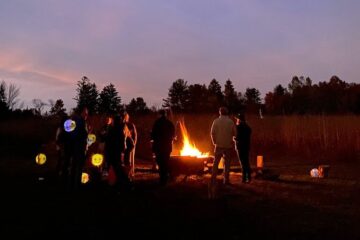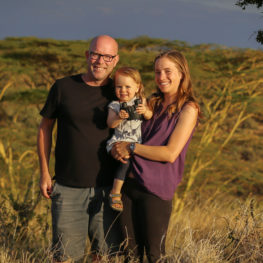 While living at our field site, we aren’t connected to any municipal water system or well. Most of our household water, aside from our drinking water, comes from collected rain water. Although, in the dry seasons (Jun-Sept, Jan-Mar), when our water runs low, it is pumped from a well on the nearest ranch and trucked over.
While living at our field site, we aren’t connected to any municipal water system or well. Most of our household water, aside from our drinking water, comes from collected rain water. Although, in the dry seasons (Jun-Sept, Jan-Mar), when our water runs low, it is pumped from a well on the nearest ranch and trucked over.
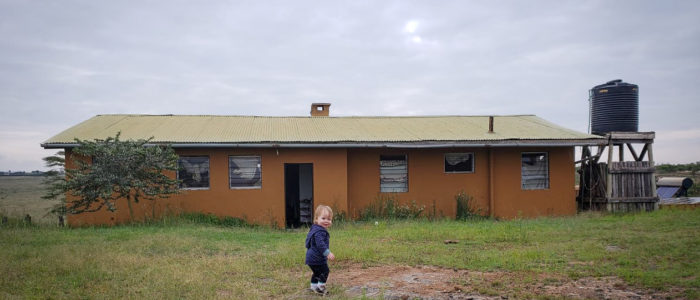
The first image is of our quaint little house (and rambunctious toddler), showing our smaller supply tank that holds 2000 L (528 gal.). The supply tank is fed by an electric pump from our larger rain water tank and provides gravity-fed water pressure.
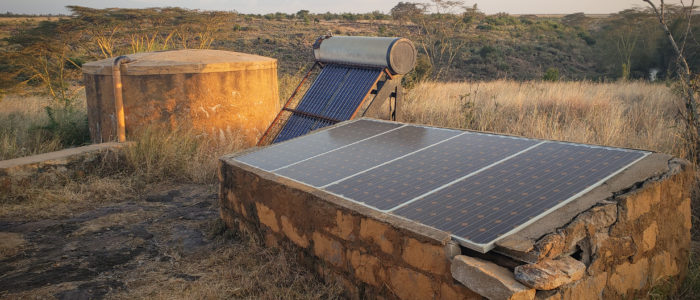
The second image is of our large rain water tank and solar array. All of the water collected from our roof will eventually almost fill this ~18000 L (4755 gal.) tank in the heaviest rainy season. We get all of the power we need from the solar array, although we have to keep an eye on the meter in the rainy season.
The average person in the US uses 80-100 L of water per day (21-26 gal) 1 Right now, we have three adults and a 19 mo old and we manage to use ~95 L per day between all of us, except for our drinking water. We buy our drinking water in 18.9 L jugs and use ~5.7 L per day (~1.89 L per person) for drinking, washing vegetables and brushing teeth. The average american drinks ~1.05 L (0.28 gal) of water daily. 2 Unfortunately there is no recycling infrastructure where we are for the plastic water jugs, but we distribute them to people in the neighbouring communities and they use them for water collection and storage. Having a limited water supply makes us very aware of our water use and conservation practise.
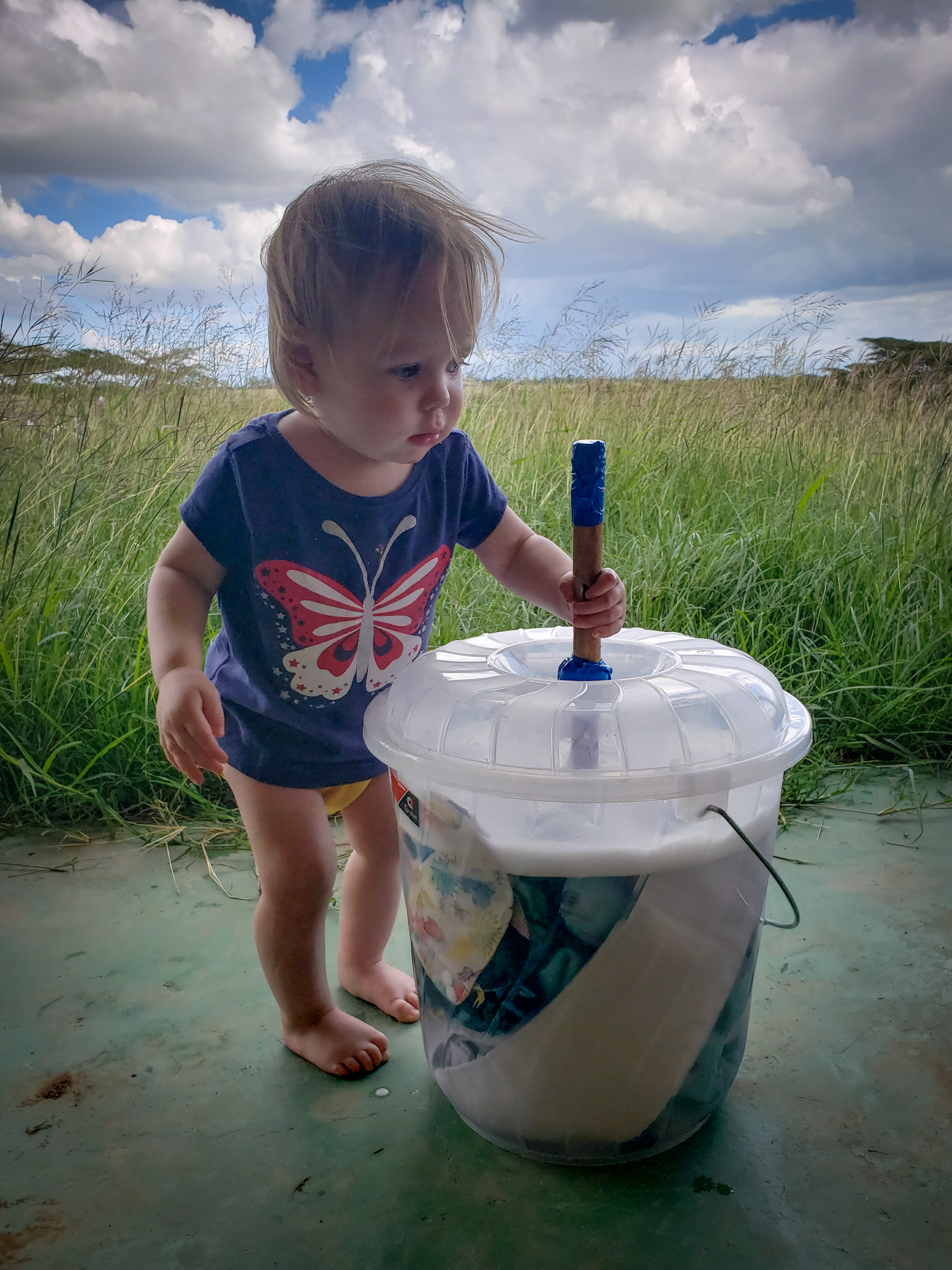
This last image is our daughter, hand washing her own diapers. Ella has been in cloth diapers since she was born, aside from traveling. We thought we could continue to cloth diaper in the field, but the demand on our water supply was just too much this dry season and we had to switch to disposable diapers. We will switch back when the rains come again, but it certainly puts things into perspective when you’re trying to balance water consumption with responsible waste practice.
While we have had to look at our water use very closely and adjust our daily lives to accommodate living with less water at our disposal, it pales in comparison with the challenges many people here face, just to access clean, safe water.
1 https://water.usgs.gov/edu/qa-home-percapita.html
2 https://academic.oup.com/ajcn/article/90/3/655/4597080
Stay tuned for more posts by Jim as he shares with us his experiences of living with his family in Kenya.



